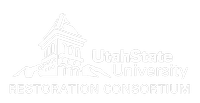Cheap & Cheerful Restoration Workshop
Overview
The scope of degraded rivers and streams is difficult to overstate. However, the cost of restoration makes it difficult to scale up treatments to the scope of the problem. This workshop was intended to look at ways of extending restoration dollars further through cheap and cheerful restoration. We discussed the principals and focused on examples of ways of increasing structural complexity in streams and rivers (e.g. increasing wood loading and prevalence of beaver dams).
Course Materials
Handouts
- Field Visit Handouts - Patha Creek, Little Tucannon, Tucannon
- Post Pounder Summary
- Pataha Design (KMZ)
Slides from Presentations
- Principles of Cheap & Cheerful Restoration - Joe Wheaton
- Beavers & Beaver Dam Analogs - Steve Bennett
- Getting Wood Back in the Stream: High Density LWD and Post-Assisted Log Structures (HDLWD & PALS) - Reid Camp
- Getting Wood Back in the Stream: Timber! - Scott Nicolai
- Pataha Creek - Recap - Steve Bennett
Instructors:
 Joe Wheaton will lead the GCD portion of class.
Office Hours: Mondays from 12:30 - 1:20 PM in NR 360
Joe Wheaton will lead the GCD portion of class.
Office Hours: Mondays from 12:30 - 1:20 PM in NR 360
Jack Scmidtt is the lead instructor for Fluvial Geomorphology.
What we did
Each day we spent the first morning in the classroom in Dayton discussing topics and listening to presentations from the instruction team. We spent the first afternoon and most of the second day in the field actually doing hands-on demos and seeing some restoration projects. Participants got to participate in design exercises, building BDAs, building PALS, and using a grip-hoist to pull some large trees and woody debris into the channel.
References
- Weber N, Bouwes N, Pollock M, Volk C, Wheaton JM, Wathen G, and Jordan C. 2017. Alteration of stream temperature by natural and artificial beaver dams. PLOS ONE. 12(5): e0176313. DOI: 10.1371/journal.pone.0176313
- Wall E, Bouwes N, Wheaton JM, Bennett SN, Saunders WC, McHugh PA, and Jordan CE. 2016. Design and monitoring of woody structures and their benefits to juvenile steelhead trout (Oncorhynchus mykiss) using a net rate of energy intake model. Canadian Journal of Fisheries and Aquatic Sciences. DOI: 10.1139/cjfas-2016-0131.
- Bouwes N, Weber N, Jordan CE, Saunders WC, Tattam IA, Volk C, Wheaton JM and Pollock MM. 2016. Ecosystem experiment reveals benefits of natural and simulated beaver dams to a threatened population of steelhead (Oncorhynchus mykiss). Scientific Reports. 6: 28581. DOI: 10.1038/srep28581.
- Bouwes N, Bennett S and Wheaton JM. 2016. Adapting Adaptive Management for Testing the Effectiveness of Stream Restoration: An Intensively Monitored Watershed Example. Fisheries. 41: 2: pp. 84-91. DOI: 10.1080/03632415.2015.1127806
- Macfarlane WW‡ , Wheaton JM, Bouwes N, Jensen M, Hough-Snee N, and Shivick J. 2015. Modeling the capacity of riverscapes to support beaver dams. Geomorphology. DOI: 10.1016/j.geomorph.2015.11.019.
- Pollock, M., Beechie T , Wheaton JM, Jordan C, Bouwes N, Weber N, and Volk C. 2014. Using Beaver Dams to Restore Incised Stream Ecosystems. Bioscience. DOI: 10.1093/biosci/biu036.
- Wheaton J, Bennett S, Bouwes N, and Camp R. 2012. Asotin Creek Intensively Monitored Watershed: Restoration Plan for North Fork Asotin, South Fork Asotin and Charlie Creeks. Eco Logical Research, Inc., Prepared for Snake River Salmon Recovery Board. Logan, UT, 125 pp.
- Pollock M, Wheaton JM, Bouwes N and Jordan CE. 2012. Working with Beaver to Restore Salmon Habitat in the Bridge Creek Intensively Monitored Watershed: Design Rationale and Hypotheses. NOAA Technical Memorandum, NOAA Northwest Fisheries Science Center, Seattle, WA, 108 pp.

